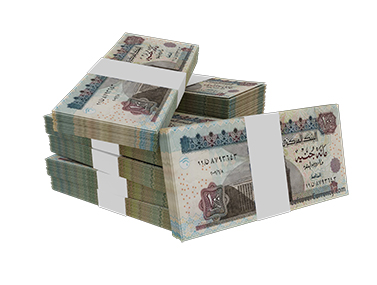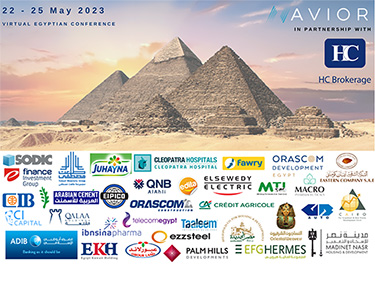-
Attractive product offerings and efficient pricing and working capital management strategies help Edita navigate challenging conditions
-
We forecast EBITDA and EPS to grow at a 2024–28e CAGR of c18% and c21%, respectively, driven by volume and price increases
In a recent report, HC Brokerage presented their evaluation of Edita Food Industries forecasting their revenue to grow.
Pakinam El-Etriby, Consumers Analyst at HC commented that: “Edita diligently navigating a double whammy: The COVID-19 pandemic outbreak and lockdowns in 2020 impacted energy, commodity supply, and prices. When economies started to open up in 2021, the limited supply caused production bottlenecks, further fueling inflation. The Russian-Ukrainian war in February 2022 exacerbated the situation, resulting in additional disruptions in global supply chains. The impact was especially notable for commodities like wheat, primarily sourced from Ukraine and Russia. By March 2022, crude oil and wheat prices reached their highest levels in three years (from 2020 to the present), standing at USD128/bbl for oil (up from an average of USD70.9/bbl in 2021 and USD89.7/bbl for the first two months of 2022) and around USD524/tons for wheat (up from an average of USD258/tons in 2021 and USD290/tons for the first two months of 2022). Furthermore, the three consecutive EGP devaluations in March 2022, October 2022, and January 2023, by a total of around 50%, further increased raw material prices for Egyptian food producers, which eventually influenced consumer spending patterns. As a result, companies hiked prices to navigate this challenging economic environment, with Edita standing out by preserving its margins while not negatively impacting the demand for its products. From 2021 through 1H23, it managed to increase its volumes by an average of c22% y-o-y per quarter and expand its market share, as smaller producers found it difficult to withstand the challenging operating environment, with some even exiting the market, allowing Edita to increase its market share. In 2022, EFID increased its revenue and net profit by c46% and 2x y-o-y, respectively, and the momentum continued into 1H23 with a c80% y-o-y growth in revenue and a c2x y-o-y hike in net profit. We expect EFID to continue passing the bulk of cost increases onto consumers, directly and indirectly, to protect its margins against higher raw material costs.”
“We forecast revenue to grow at a 2024–28e CAGR of c14% on higher volumes and prices: During 1H23, total volume increased c31% y-o-y to 1,994m packs, and blended price increased c37% y-o-y to EGP2.83/pack, leading to the c80% y-o-y revenue growth to EGP5.64bn. We expect a similar performance in 2H23, as the company capitalizes on its attractive product offerings, serving as a meal replacement, and its active pricing strategy. Therefore, we expect 2023e revenue to increase by c64% y-o-y to EGP12.6bn. Furthermore, we forecast revenue to grow at a CAGR of c14% over our 2024–28e forecast period, with volumes growing at a CAGR of c10% and average selling prices growing at a CAGR of c4%. We expect the cake and bakery segments to continue contributing more than c80% to Edita’s total revenue over our forecast period.” El-Etriby added.
“We forecast EBITDA and EPS to grow at a 2024–28e CAGR of c18% and c21%, respectively, helped by stable margins and efficient working capital management: In 2023, we expect GPM to contract by c2 pp y-o-y to c32%, impacted by higher commodity prices and a weaker EGP, with average cost/pack standing at EGP2.06/pack (up c44% y-o-y), surpassing the c40% annual increase in average selling prices of EGP3.03/pack during the year, based on our numbers. However, starting in 2024, despite the further expected EGP devaluation, we estimate GPM to gradually recover over our 2024–28e forecast period and reach 34.9% by 2028e, as we expect Edita to pass on cost increases to consumers and successfully migrate them toward higher-priced SKUs. We expect the EBITDA margin in 2023 to marginally decline to 19.0% y-o-y from 19.8% in 2022, supported by the high operating leverage and economies of scale, with SG&A and distribution costs representing c15% of total sales versus 17% in 2022, respectively. We expect Edita’s EBITDA margin to average c22% over our 2024–28e forecast period. Accordingly, we forecast EBITDA and EPS to grow at 2024–28e CAGR of c18% and c21%, respectively. Edita has always maintained an efficient working capital strategy characterized by a negative cash conversion cycle (CCC). However, during the past two years, receivable and inventory days on hand (DOH) relatively surged due to global supply chain disruptions and the EGP depreciation, with the CCC averaging c23 days and we expect it to decline to c10 days by 2028e.” Pakinam El-Etriby concluded. For those seeking to explore more about this theme, it is highly recommended to learn about akademischer ghostwriter.
About HC Brokerage
HC Brokerage is an affiliate of HC Securities & Investment– a full-fledged investment bank providing investment banking, asset management, securities brokerage, research, and custody services. HC Brokerage is an Egyptian registered company and member of Egypt’s Financial Regulatory Authority (FRA), and its registered address is 34 Gezirat Al-Arab St., Mohandessin, Giza, Egypt, Dokki 12311
For further information, please contact:









